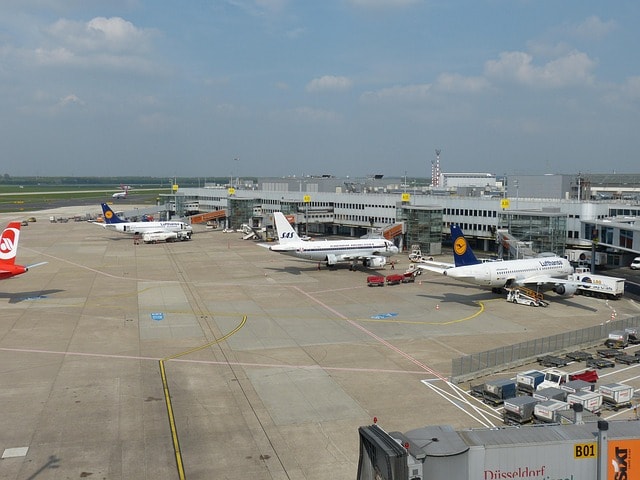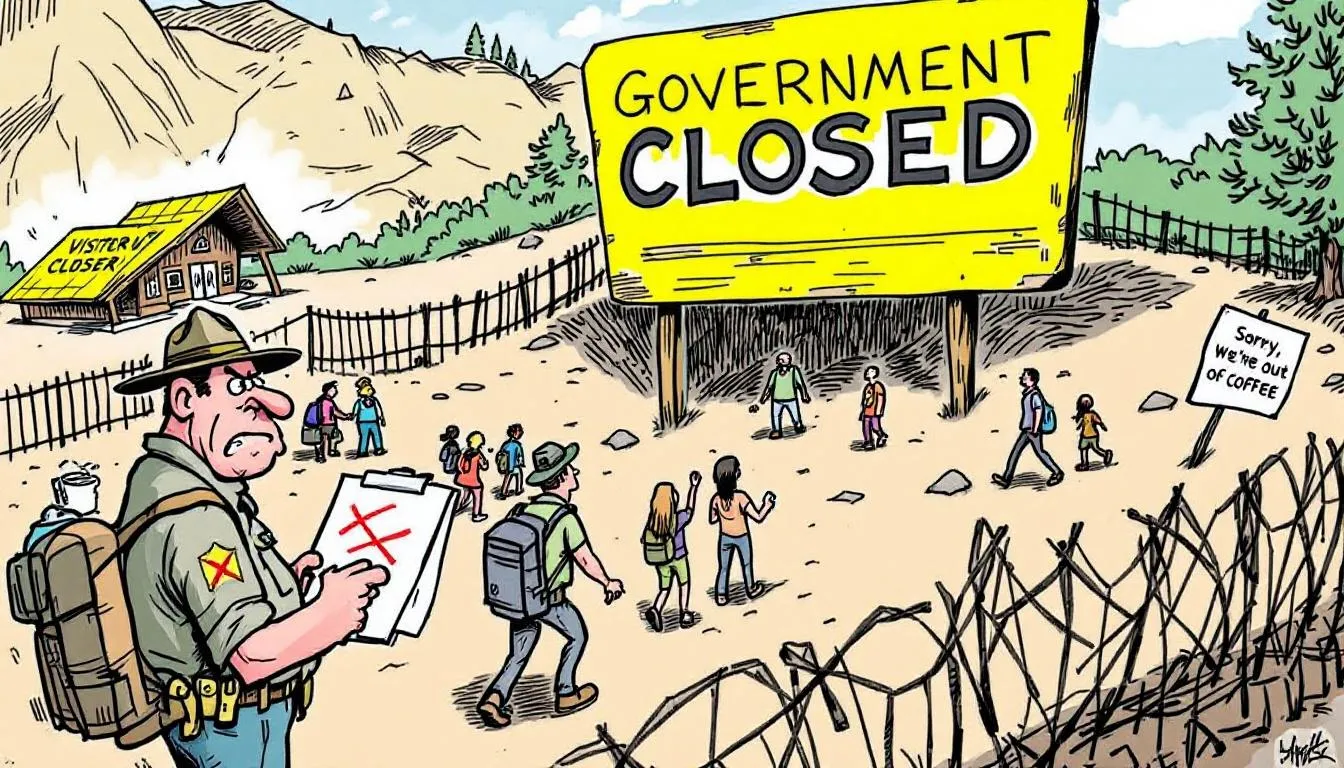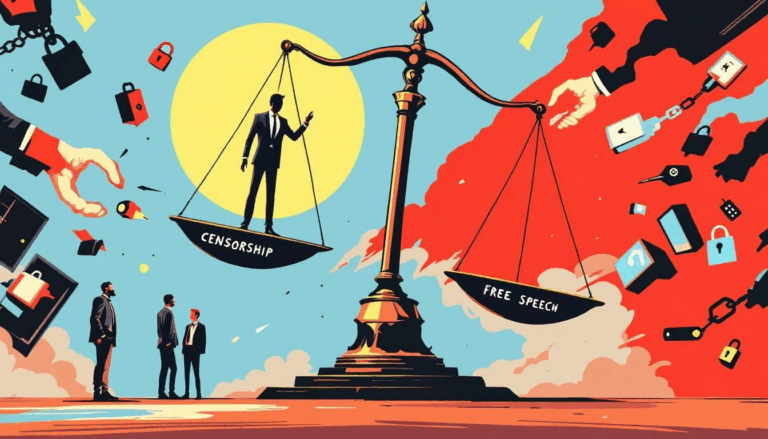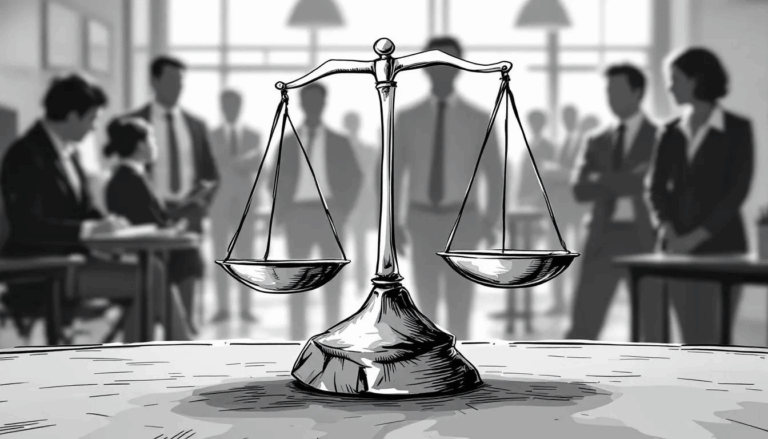Shutdown gov is here because Congress didn’t pass a funding bill. This means federal agencies are closed and workers aren’t paid. Learn about the causes, impacts on workers, parks, travel, and the economy.
Key Takeaways
- The government shutdown is in its sixth day due to Congress failing to pass a funding bill, resulting in significant disruption across federal agencies and affecting about 750,000 federal workers.
- Essential services like federal law enforcement and certain health care operations continue, but many federal agencies are operating with minimal staff, risking public safety and access to services.
- Political blame is heating up, with both parties arguing over responsibility for the shutdown, complicating potential negotiations and leaving the nation’s financial stability at risk.
The Current Status of the Federal Government Shutdown

The federal government shutdown, now in its sixth day, has thrown the nation into a state of disarray. The shutdown began on October 1, 2025, after Congress failed to pass the necessary appropriations legislation to fund government operations. Congress attempted to pass a continuing resolution as a stopgap measure to keep the government open, but it did not pass. Since then, much of the federal government has shut down, with federal agencies halting their operations. This government shut has been marked by a series of failed funding proposals, with both Republican and Democratic measures falling short of the 60 votes needed to advance in the Senate.
The EEOC is closed, but some staff are still there to process charges being filed. The EEOC, like all agencies, has a plan about what to do during a shutdown.
The most recent shutdown votes have highlighted the deep legislative deadlock. The GOP’s short-term funding bill vote failed, leaving the government without a new funding agreement to fund the government. Even a Democratic stopgap funding bill could not secure enough support, failing with a failed vote of 45 to 50. The Senate voted on multiple funding bills, but none received enough support to pass.
This pattern of unsuccessful funding proposals underscores the significant divide between the parties, with neither side willing to budge. Congressional Republicans have pushed for their own funding priorities and resisted compromise, contributing to the ongoing stalemate. Democratic senators have criticized the lack of formal negotiations and have called for more bipartisan discussions. Republican leaders in the republican party are now hoping to gather more Democratic support to pass bills, but the outlook remains bleak as the shutdown is likely to continue through the week.
The Republican bill has added to the challenges faced by lawmakers. House Republicans have issued statements emphasizing their stance on spending cuts and have played a key role in shaping the debate during the shutdown.
As federal departments grind to a halt, the consequences of the congressional failure to pass funding bills are becoming increasingly apparent. The Senate has scheduled further votes on funding measures, but no agreements have been reached yet. The Senate failed to advance both Republican and Democratic funding proposals. With each passing day, the shutdown continues to disrupt government operations, highlighting the urgent need for a resolution. If Congress fails to act soon, the situation may worsen.
Causes of the Shutdown
The roots of the current government shutdown lie in a deep-seated legislative standoff between congressional Democrats and Republicans over how to fund the federal government. At the heart of the dispute are disagreements about government funding priorities, with both sides refusing to compromise on key issues. Congressional Democrats have pushed for the extension of health insurance subsidies under the Affordable Care Act, aiming to keep health insurance affordable for millions of Americans. On the other side, the Trump administration and Republican leaders have insisted on increased funding for border security and other conservative priorities.
This clash over the direction of federal spending has led to a breakdown in negotiations, leaving the government without the necessary funding bills to remain open. As a result, the federal government shutdown continues, with no immediate resolution in sight.
Impact on Federal Employees and Agencies

The shutdown has significantly impacted federal employees and government agencies in several ways:
- Approximately 750,000 federal workers face furloughs due to budgetary constraints.
- The ripple effects extend beyond just the employees, affecting the functioning of various federal agencies and delaying numerous government functions, including those of a federal agency.
- Essential services are stretched thin, with many agencies operating with skeletal staff.
- The loss of federal funding is the primary reason for these furloughs and widespread agency disruptions.
- Federal courts remain open for a limited time using reserve funds, but may curtail operations if the shutdown continues.
Military personnel are required to continue working without pay during the shutdown.
Social Security payments continue during the shutdown, but some services, such as new card issuance and benefit verification, may be delayed. Federal loans for students, such as Pell Grants and Federal Direct Student Loans, may continue to be disbursed for a short period, but could face delays if the shutdown persists. The Special Supplemental Nutrition Program for Women, Infants, and Children (WIC) may run out of funding and be unable to serve families if the shutdown continues.
The National Park Service is one of the hardest hit, facing drastic staff reductions that hinder its ability to protect natural resources. Key impacts include:
- Over 25% of permanent positions eliminated
- Increased risks from invasive species and poaching
- Service delays and operational challenges similar to those seen in past shutdowns caused by furloughs
Federal Employees Furloughed
The human toll of the government shutdown is evident in the plight of federal employees:
- Approximately 750,000 federal workers have been furloughed, forced to stay home without pay.
- Another 700,000 federal employees are expected to work without compensation, adding to the stress and uncertainty faced by the federal workforce.
- There are concerns that furloughed employees might not receive back pay once the government reopens, a worry highlighted by Senator Dick Durbin.
Historically, furloughed federal employees almost always receive back pay after the shutdown ends. However, the current legislative deadlock casts doubt on when that relief might come. As the shutdown continues, the financial strain on these workers grows, prompting some to seek unemployment assistance to make ends meet.
The uncertainty surrounding their pay and job security only adds to the growing frustration among federal employees.
Essential Services Still Operating
Despite the widespread disruption, certain essential services continue to operate during the shutdown. Federal law enforcement and emergency services are among the critical functions that remain active, ensuring the safety of human life and the protection of property. Criminal litigation, for instance, proceeds without interruption as it is considered vital to public safety.
The Department of Labor continues to investigate child-labor violations and process certain benefits payments. Similarly, USCIS operations are funded by user fees and are expected to continue processing petitions and applications for immigration benefits without direct impact from the shutdown.
The U.S. court system, while initially remain open using funds collected through filing fees, may curtail significant services if the shutdown extends beyond October 3, 2025. These essential services provide a lifeline amid the chaos, but they too are not immune to the broader impacts of the shutdown.
Air Traffic Control and Travel Disruptions

The skies are no less chaotic, as the government shutdown has wreaked havoc on air travel. Key issues include:
- Air traffic controllers are working without pay and experiencing increased stress.
- There is a surge in sick calls and significant staffing shortages.
- Flight operations nationwide are affected, causing delays.
- Major airports like Denver International and Newark Liberty International Airport are facing ground delays.
On Monday night, Transportation Secretary Sean Duffy addressed the media in a press conference, highlighting the impact of the shutdown on air traffic control operations and emphasizing ongoing safety concerns.
Hollywood Burbank Airport has seen about 23 percent of its flights delayed, with average delays stretching to two and a half hours. The Essential Air Service program, which provides vital subsidies for air travel to smaller communities, is also at risk of depletion.
The closure of air traffic control towers due to staffing shortages has further compounded the problem. These disruptions underscore the critical role of air traffic controllers and the severe impact that a government shutdown can have on travel and safety.
Health Insurance and ACA Subsidies Debate
The shutdown has thrust health care, health insurance, and obamacare subsidies into the spotlight. Democrats are pushing for the extension of enhanced subsidies under the Affordable Care Act as part of any temporary funding agreement. They aim to ensure a guaranteed outcome of the vote for subsidies and make the tax credits permanent. However, if these enhanced premium tax credits are not extended, individuals may see their annual premium costs skyrocket. Expiring subsidies could also cause adult children’s insurance premiums to double, significantly increasing the financial burden on families.
The financial implications are significant, with the expiration of enhanced tax credits expire expected to more than double the average health insurance premiums for subsidized enrollees. Those with incomes above 400% of the federal poverty level could face increases of over $22,600 annually.
Despite the urgency, Republican leaders have refused to discuss an extension of ACA subsidies while the government remains shuttered, insisting that negotiations will only occur once the shutdown ends. Some Republicans have argued that Democrats shut the government down over healthcare funding disputes. In the ongoing political debate, Trump’s claim that Democrats’ failed healthcare policies are to blame for the current impasse has been widely discussed, though Democratic leaders have disputed Trump’s claim about ongoing negotiations.
Accusations have also been made linking healthcare subsidies to undocumented immigrants, though these claims are often disputed. The role of moderate Democrats has become increasingly important in ongoing discussions to resolve the shutdown, as both parties seek a path forward amid the contentious funding debate.
Effects on National Parks and Public Lands

National parks and public lands are not spared from the fallout of the shutdown. Former park superintendents have urged that national parks should be closed to prevent damage from unsupervised visitors. The lack of supervision during the shutdown poses a significant risk to these treasured natural resources, with the potential for vandalism and other damages.
The impact is already being felt, with staffing shortages preventing effective management of natural resources and increasing the risks from invasive species and poaching. Visitors to national parks may find facilities closed and services severely limited, further diminishing their experience.
The shutdown highlights the importance of maintaining adequate staffing and funding for the protection and preservation of public lands.
Economic Consequences of the Shutdown

The economic consequences of the shutdown are far-reaching:
- The Congressional Budget Office estimated that the 2018-2019 shutdown lowered GDP growth by 0.1% to 0.2% in consecutive quarters.
- Prolonged shutdowns can reduce GDP growth by 0.15 percentage points in the fourth quarter following the shutdown.
- Each week of reduced government activity can decrease annualized GDP growth by 0.1 percentage points.
Furloughed federal employees face unexpected financial difficulties and may need to seek unemployment assistance. The closure of national parks alone could lead to daily losses of up to $1 million in fee revenues and around $80 million each day in decreased visitor spending, which could be exacerbated by government funded programs.
Despite the shutdown, the IRS is expected to continue processing tax refunds, so most taxpayers should still receive their refunds on time.
Before the shutdown, the United States dollar and Treasury securities had already seen declines, reflecting the broader economic uncertainty. While a short-term shutdown might not significantly impact the economy, the longer it lasts, the greater the economic strain becomes.
Legislative Stalemate and Political Blame Game
The legislative stalemate is at the heart of the ongoing democrat shutdown. The Senate has repeatedly rejected a ‘clean’ stopgap funding bill from the House due to a lack of bipartisan support. Senate Majority Leader John Thune has criticized Democrats for aligning with far-left groups, while Senate Majority Leader Chuck Schumer has emphasized the need for bipartisan solutions.
This blame game has deepened the divide, with each party pointing fingers at the other for the impasse. The White House has played a central role in shaping the administration’s response to the shutdown, actively participating in legislative discussions and policy negotiations to resolve the funding crisis.
A recent CBS poll shows 47% of respondents blamed Trump and Republicans for the shutdown, while 31% blamed both parties equally. President Trump has expressed a willingness to negotiate with Democrats on healthcare issues related to the funding impasse, but no significant progress has been made. The House remains out of session while the Senate attempts to negotiate a deal to reopen the government. This lack of progress has led to increased frustration among senators and the public alike, as some choose to blame democrats.
Ongoing negotiations could result in either a compromise that maintains current spending levels or a continued stalemate that further complicates government tonight operations. As the shutdown continues, the pressure on both parties to reach an agreement grows, with the stakes higher than ever.
Statements from Key Political Figures
Key political figures have made their voices heard amid the shutdown. President Trump has been firm in his stance, stating that there will be no negotiations until the government is reopened. This hardline position has added another layer of complexity to the already fraught negotiations involving president donald trump.
House Speaker Mike Johnson recently spoke with President Trump regarding the shutdown, but no clear path to resolution has emerged. The House Minority Leader has also issued statements and played a key role in negotiations to resolve the shutdown, highlighting the ongoing efforts and debates among congressional leaders. The statements from these leaders reflect the deep divisions and entrenched positions that have characterized the shutdown.
As political rhetoric intensifies, the need for a resolution becomes ever more urgent.
Historical Context: Past Shutdowns
To understand the current shutdown, it’s helpful to look back at past shutdowns. The government has experienced four major shutdowns that lasted over a business day, notably in 1995-1996, 2013, and 2018-2019. The 1995-1996 shutdown, which lasted 26 days, was sparked by disagreements over budgetary allocations between President Clinton and the Republican-led Congress.
In 2013, a 16-day shutdown occurred due to conflicts surrounding the funding of the Affordable Care Act. The longest shutdown in recent history, lasting 35 days, took place in late 2018 and early 2019, primarily due to a dispute over funding for a border wall.
During this shutdown, national parks suffered significant damage due to a lack of supervision, including vandalism and sanitation issues. These historical examples provide valuable lessons on the potential impacts and outcomes of prolonged government shutdowns.
What Could Happen Next?
Looking ahead, several scenarios could unfold as the shutdown continues. If the shutdown extends for a prolonged period, both parties might face backlash from voters, potentially resulting in a mutual decline in support during upcoming elections. House Speaker Mike Johnson has stated that the House will prioritize discussions aimed at reopening the government without preconditions.
Senate Minority Leader Mitch McConnell has indicated that Senate Republicans are prepared to work towards a resolution, but only if the administration engages in negotiations. One possible outcome is that some Senate Democrats may vote with Republicans on the republican plan to reopen the government, especially those facing re-election in competitive states.
As the shutdown drags on, the pressure on both parties to find a compromise will only intensify.
Summary
The ongoing government shutdown has highlighted the deep political divisions and the far-reaching consequences of a legislative deadlock. From the furlough of hundreds of thousands of federal employees to the disruption of essential services and economic impacts, the shutdown’s effects are being felt across the nation. The political blame game continues, with both parties pointing fingers and struggling to find common ground.
As we look to the future, the need for a resolution is more pressing than ever. The historical context of past shutdowns provides valuable insights, but it also underscores the importance of bipartisan cooperation to prevent further damage. The coming days will be critical in determining whether a compromise can be reached to reopen the government and restore normalcy. Until then, the nation remains in a state of uncertainty, waiting for a resolution to this ongoing crisis.
Frequently Asked Questions
How many federal employees are expected to be furloughed during the current shutdown?
About 750,000 federal employees are likely to be furloughed during this shutdown. It’s a tough situation for many out there. To read an article about some of the other legal changes happening during this administration, click here.
Which essential services continue to operate during the shutdown?
During a shutdown, essential services like federal law enforcement, emergency services, and key functions of the Department of Labor and USCIS keep running. So, you don’t have to worry; some vital operations will still be up and running!
How is the shutdown affecting air travel?
The shutdown is causing major headaches for travelers, with air traffic controller shortages leading to more flight delays and cancellations. If you’re flying soon, brace for potential disruptions!
What is the main issue causing the legislative deadlock and continuation of the shutdown?
The main issue causing the legislative deadlock and shutdown is Congress’s inability to pass funding bills, primarily due to a lack of bipartisan support. It’s frustrating for everyone involved!
How have past shutdowns affected national parks?
Past shutdowns have really hurt national parks, causing vandalism and sanitation problems because there wasn’t enough supervision. It’s a tough situation that affects these beautiful places we love to visit.



